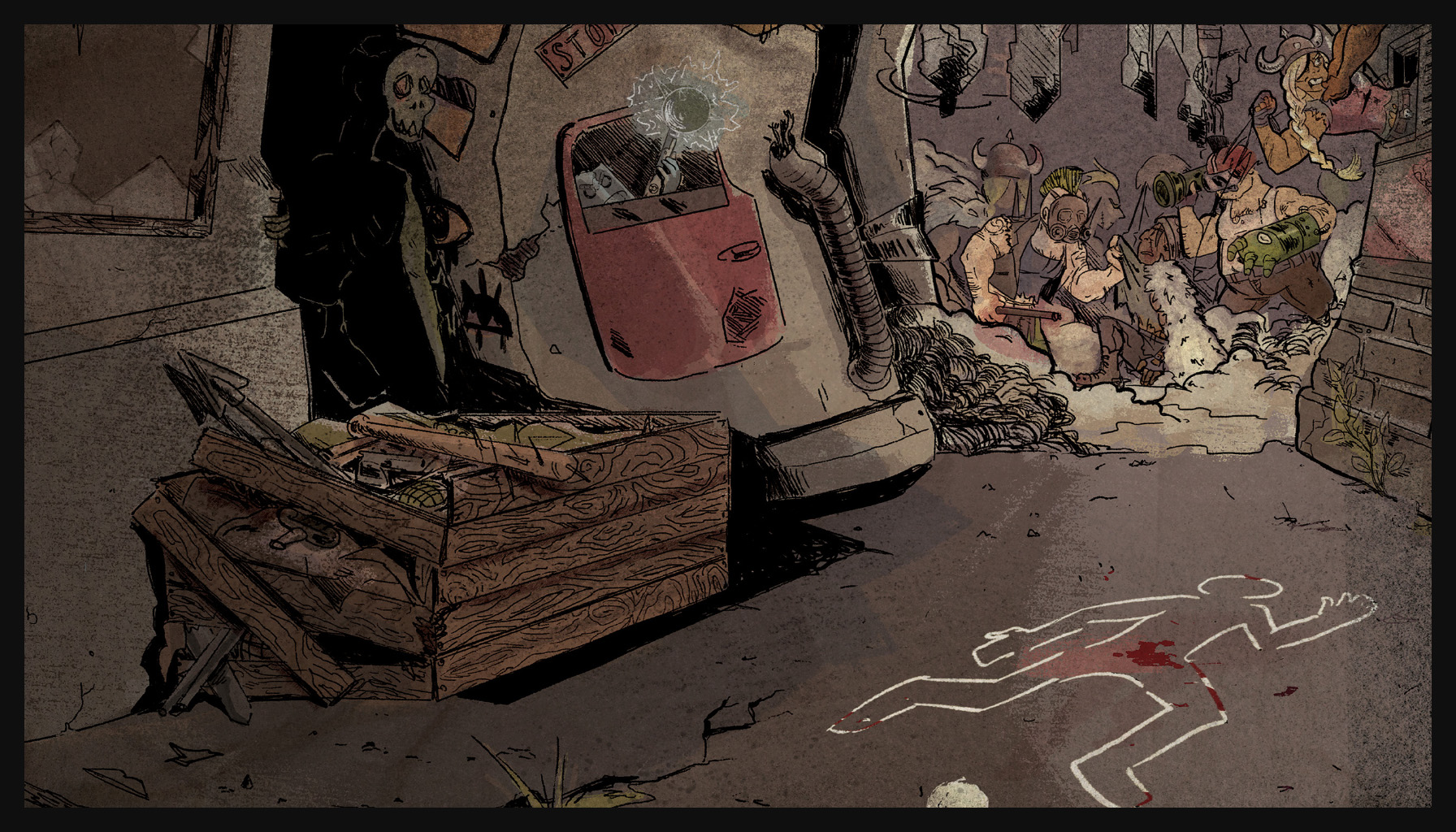|
Getting your Trinity Audio player ready…
|
“Sievert & Gray, Detectors” is a detective comedy set in the Orcklands, described as a sprawling urban nightmare somewhere in the northern part of the Waste. The central Orcklands island, where our heroes attempt to do their stuff (“attempt” being the operative word), is supposedly a cramped island surrounded by water, with dangerous forests to the south, Overlords to the north and decrepit ruins everywhere else.
So was it all made up? No! All of the Waste is based on real-life New Zealand, my home and happy place.

Finding the real Orcklands
Everywhere in the Waste is a devolution of somewhere. There are only a handful of truly new locations, such as the bar Smack-dab from “Smack-dab, in the Middle of Nowhere” and its nearby township of Second Thought, and the One-Acre Wall in the Crumble Bulletin.
For Sievert and Gray, they’re fighting crime in NZ’s largest city – Auckland, currently home to about 1.6 million people and taking up just over 1,000 square kilometres (386.102 square miles).
One of the key differences between my Orcklands and the real Auckland is the level of the ocean. Across the entire Waste, the ocean has risen by about 40 metres. As you can imagine, that drastically changes the layout of the country – particularly coastal areas like Auckland.
Key locations in the Orcklands
While I actually plotted out a few important locations in the Orcklands, “Sievert & Gray, Detectors” focuses on a central three: Lynchfield, Westhill and One Kings, all of which can be found on the central Orcklands island.
Central Orcklands island: This is the old Auckland Central, stretching from around Victoria St W in the CBD, south to Wattle Bay, east to St Johns, and west to Mt Albert. It is now an island, cut off from the rest of the city by large, dangerous straits – each of which is marred by a cemetery of old skyscrapers still splashing around in the ocean as if they might survive.
Lynchfield: Modern day Lynfield and Hillsborough, as well as parts of Mt Roskill. Lynchfield is a coastal suburb that used to comprise multiple smaller regions, until the Borgon chiefs of Lady Bulbhead and Geronimo Sievert Sr. combined forces to conquer the area and unite it – setting up a government and calling themselves civilised. Good for them. Not so good for the regions that got swallowed.
One Kings: The old Three Kings mostly, boxed in by Balmoral Rd in the north, Dominion Rd west, and Pah Rd east. Legend has it that there used to be three Borgon kings who ruled this area until the third decided it would be more efficient to trim down the government. Now there’s just a One King, and your imagination can probably fill in those blanks…
Westhill: Westhill is a new name for a large tract of the central Orcklands island. Where Lynchfield and One Kings are devolved versions of older names, Westhill’s unique story has meant it developed differently to its more established (and older) counterparts. Until recently, Westhill was considered ‘the western wilds’, that is, an untamed Waste where Borgons roamed free, shoulder to shoulder (or rather, axe to axe) with cannibals, mutants, and Gachook-knows what else. But, under the new leader – The Albert – it has been collecting itself together into a single suburb, which stretches the length of Dominion Rd from Mt Roskill to Eden Terrace, encompassing parts of Morninside, Sandringham and Mt Albert. Mt Albert is a pivotal location in the story, where The Albert has built his palace atop an old volcano.

Other major differences between Auckland and the Orcklands
If you’ve been to Auckland, you’ll probably read Sievert & Gray and think, “Why the ding dang dong are there so many skyscrapers? Last I checked most of the city was built from awkward little 1970s bungalows that leaked like a sieve.”
Well here’s a little nut for your platter! The Waste Stories series takes place a few centuries after the end of the world (nobody knows how long it has truly been), and the end of the world didn’t occur until some time into our future.
Indeed, the Old World was a highly advanced civilisation, with robotic servants, vehicles that could hover (the sign of all good Sci-Fi), advanced renewable electricity, neon holographic displays, plasma weapons, and all sorts of other futuristic little bits and bobs.
The big issue that Old World Aucklanders had was space – or the lackthereof. While we see there is bountiful space in the great planes of Can’t Be Buried (the setting for “Smack-dab”) up in the city there’s none. In an exaggeration of modern-day New Zealand, everyone, apparently, wanted to move out of the rural countryside and into the city.
Everywhere there’s land available, with the exception of a few parks and natural spaces, has been knocked down and redeveloped as skyscrapers – with ‘skystreets’ linking the buildings together, so the rich could live high in the sky where they couldn’t smell the poor anymore. The vast majority of those towers are still there, jumbled together in a big mess of alleys and broken bridges that enable a huge quantity of people to thrive(ish) in such a small space.
What haven’t we covered today?
There’s a fair old whack of Orcklands not mentioned in “Sievert & Gray, Detectors”, but we’ll have to come to that another time.
Until then, if there’s something you’d love to know about the history of the Waste, what it’s based on, or who lives there, let me know in the comments or on social media!
Contact Duncan


